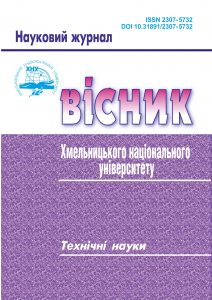ALGORITHM FOR THE SYNTHESIS OF OPTIMAL FOTS FREQUENCY PLANS FOR NONLINEAR TRANSMISSION ENVIRONMENT (BOAT METHOD)
DOI:
https://doi.org/10.31891/2307-5732-2023-327-5-88-97Keywords:
algorithm, dynamic programming method, non-uniform frequency plan, fiber-optic transmission system, simulation modelingAbstract
Modern fiber-optic transmission systems (FOTS) with dense spectral multiplexing (DWDM) implement uniform frequency plans, which means the width of all channels is the same. There is a common trend to gradually reduce the bandwidth of individual channels from 200 GHz to 25 and even 12.5 GHz. However, the principle of spectrum resource distribution remains the same, which is typical for radio communication systems. This principle does not consider the fact that in different areas of the specified spectral range, the distortion of optical signals is also significantly different due to the non-uniformity of the attenuation coefficient and different values of the dispersion parameters. The latest transmission systems use nonlinear effects such as optical solitons. Therefore, one should take into account the influence of nonlinear effects on the duration of optical pulses and their spectrum width.
In this work, an algorithm for the rapid synthesis of optimal non-uniform frequency plans for promising FOTS that can adapt to a specific transmission environment is proposed. The proposed algorithm is based on the principles of R. Belman's dynamic programming method. The maximum total transmission speed in all frequency channels of the VOSP is considered as an optimum criterion in this paper.
The main idea of the proposed algorithm is to project a space of a certain dimension onto spaces of smaller and smaller dimensions. At the same time, each step of such design is carried out in accordance with the selected criterion of optimality, that is, each of the projections is already optimal in its reduced space. As a result, the number of necessary operations is reduced from large numbers to significantly smaller numbers. It is shown that the proposed algorithm can be already applied for existing FOTS. It is also shown that non-uniform frequency plans synthesized according to this algorithm provide a significant advantage in both transmission speed and spectral efficiency compared to uniform plans.

